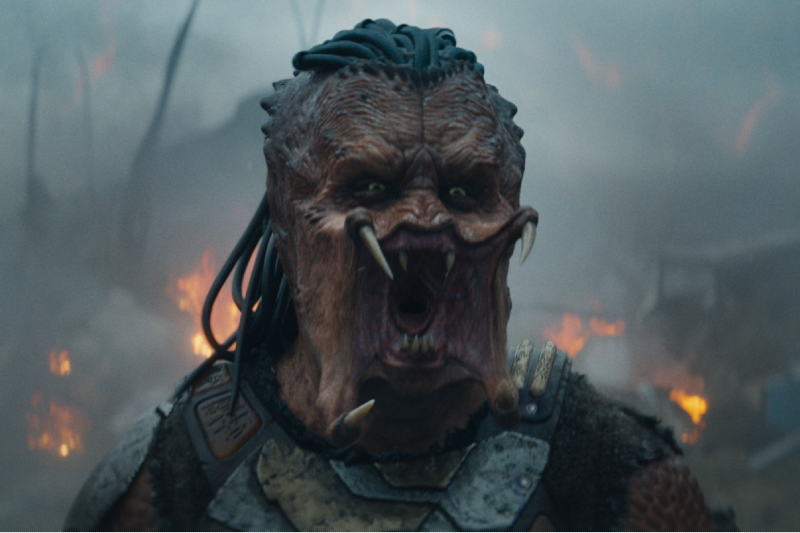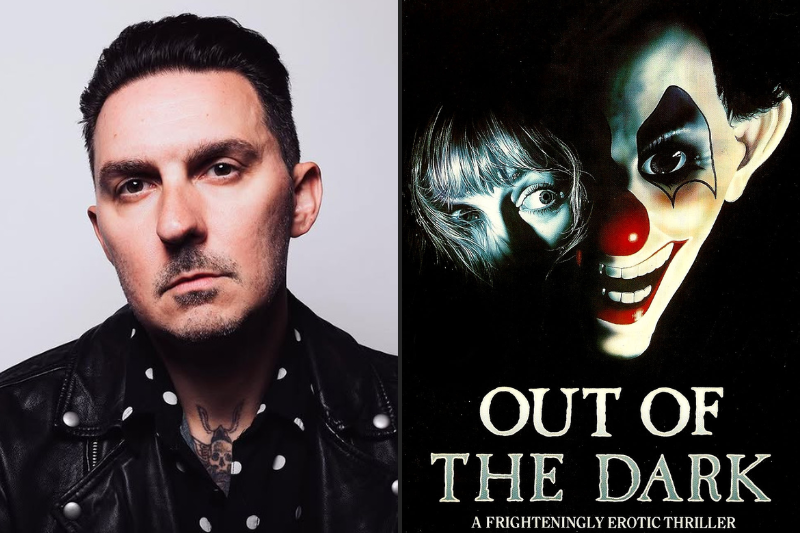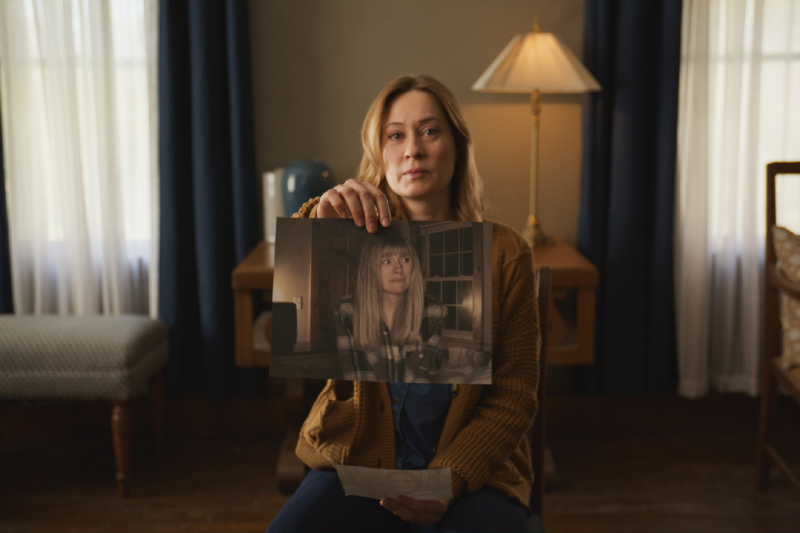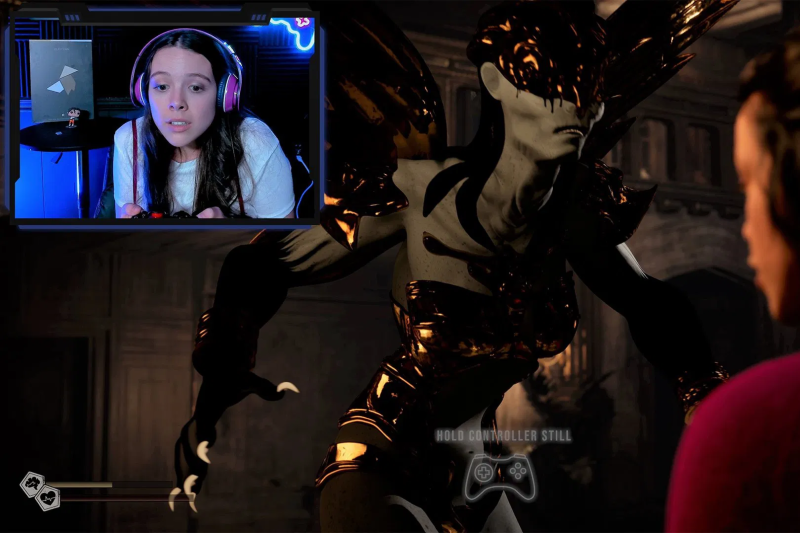How good does a movie need to be to be good enough? It may sound like a glib question – or, at best, the damndest of faint praise – but it’s a fair question to ask of independent horror, which can often be full of big ideas and iffy execution. When comparing a film like Nick Szostakiwskyj’s Archons to its bigger-budgeted counterparts, it may be easy to focus on loose narrative threads as grounds for dismissal. But learn to look beyond the surface, and what we see is a film brimming with enough ideas to make even its shortcomings a compelling exercise in cosmic horror.
After a successful single launches them to the status of one-hit wonder, Canadian rock band Dog Sled is at something of an inflection point. Guitarist and songwriter Eric (Rob Raco) has begun to write music for himself, which leaves lead singer Mitchell (Josh Collins) and drummer Olivia (Samantha Carly) on the verge of becoming a musical afterthought. So when Eric decides to go on a musical vision quest – following in the footsteps of his musical idol by camping in the Canadian wilderness and doing his fair share of psychedelics – Mitchell and Olivia invite themselves along. After all, it might be the last chance for Dog Sled to turn the lighting in the bottle into something sustainable.
But after the group arrives at their first campsite, things almost immediately begin to go wrong. Mitchell discovers an Indigenous shrine that makes the group uneasy, while those that take the drugs begin to hallucinate a group of creatures moving through the woods. Things escalate when April (Parmiss Sehat), a Dog Sled fan they encounter on the trailer, begins to suffer from debilitating headaches. Before long, the band will learn that there is more to the drugs than just creative inspiration – and more to the creatures in the woods than any of them might fear.
Archons is the second feature film from Canadian filmmaker Szostakiwskyj. When taken alongside his first feature, Black Mountain Side, an image of Szostakiwskyj as a storyteller begins to swim into focus. The director has spoken in interviews of his fascination with existential horror and his own academic background in archaeology. Both films seem to draw on two strengths of Canadian cinema: the intersection of Indigenous culture with the postcolonial experience, and the celebration – or perhaps exploitation – of body horror in the tradition of David Cronenberg. Both Archons and Black Mountain Side show a respect for Indigenous customs and a disrespect for the human form – which, if written in Latin, would make for a fine horror filmmaker coat of arms.
Consider the ritual at the heart of the film. As the movie unfolds, we never learn what, exactly, is in the drugs that Eric meticulously rations out to his fellow band members, but we do see the bloody fallout of what happens when someone takes too much (or none at all). Szostakiwskyj’s approach is a fascinating blend of both cosmic and folk horror, building on Indigenous mythos of trickster woodland spirits with a left turn into Lovecraftian terrors. It’s a fascinating marriage of ideas that enrichens both horror traditions. It also leaves the film without a well-defined ruleset, an act of faith between filmmaker and audience that suggests Archons will be an opaque watch for those interested in its people-in-the-woods premise.
Are the creatures in the woods – voiced so powerfully by Black Mountain Side’s Nathaniel Gordon – ancient beings who roam the forest? Are they extradimensional beings? Or are they just drugged out manifestations of the band’s own impending collapse? Your guess is as good as mine. But the fun of a film like Archons is not in pinning down the logic behind the screenplay, or demanding answers of a filmmaker who may be more interested in the threads themselves than pulling them apart. If you want to take the perspective that everything that happens in Archons is metaphor, part of Mitchell’s long, dark night of the soul, you absolutely can.
That is the heart of this film and Black Mountain Side before it: the suggestion of the cosmic, both tantalizingly close and somewhat unfulfilled. Both films feel like Szostakiwskyj has torn off a piece of a bigger story, alluding to a mythology that only intersects with humanity in fragments (and often leaving no survivors in its wake). The very ambiguity that will turn some viewers away is what gives these films their power, and that allows an independent filmmaker like Szostakiwskyj to tell stories that end more in an ellipsis than an exclamation point. Experiencing his films – as well as the paranoia of his characters – makes Archons a film worth seeing, even if only to round out your watchlist of cosmic horror.
And that is the takeaway worth having. We often treat the difference between good and bad films as failures along an absolute scale – that a good movie excels in categories such as writing, directing, and performance, while its inferiors fall short of the bar that has been set. The truth is often more nuanced than that. Archons may lack the kinetics of other flavors of cosmic horror, but it is still a compelling entry for those starving for more cosmic cinema. Embrace the film for what it does right, and you may find yourself with an unknown movie to champion for like-minded horror fans.






